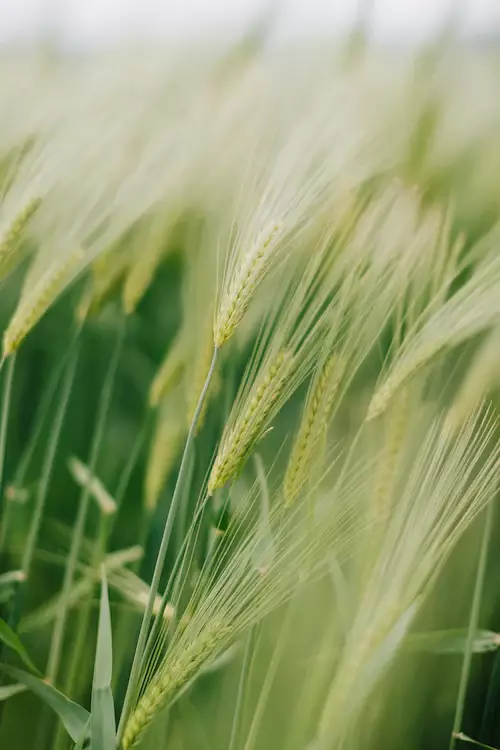1-Acre Farm Ideas That Will Actually Make a Profit
Want to make money off your small farm? We'll cover tips and tricks for turning your acre into a profitable operation, from raising animals to growing produce to finding other sources of revenue. Get ready to maximize your profits.
Growing organic vegetables and fruits, raising livestock, aquaculture, beekeeping, mushroom cultivation, herb production, planting flowers, selling free-range eggs, raising rabbits, and producing hay, pasture, and small-scale grain are great ideas for a 1-acre farm. Agritourism opportunities can also boost profits.
It's important to research local demand and pricing to ensure the best chance of success. With careful planning, you're sure to bring in a steady income. Start your farm and experience the joys of working the land with this guide.
Summary
- Planting a variety of vegetables and fruits that are best suited for each climate can bring you profit.
- Raising livestock and having small-scale aquaculture can be good ways to earn money from a 1-acre farm.
- Herb, hay, and pasture production can be sold within the community.

On this page:
Make a Profit from These 1-Acre Farm Ideas
Here are 12 ideas to choose from to make a profit out of your 1-acre farm.
1. Growing vegetables on your 1-acre farm
Plant a variety of vegetables that you can sell either through a farmers' market or directly to local restaurants. To get started, it’s important to do your research and plan out what types of vegetables you want to grow, what soil you need, and how you will market your product.
Consider what is popular in your region and what types of vegetables you like to eat. You may want to focus on a particular type of vegetable, or you may want to diversify and grow a variety of vegetables. Consider factors such as the amount of work and time needed to care for each type of vegetable and the potential market.
2. Raising livestock on your 1-acre farm
Start raising chickens, goats, sheep, or cows for their meat and milk. Chickens can be a great source of eggs, meat, and fertilizer. Goats can be used for milk, meat, and fertilizer as well. Sheep can be used for wool and meat, while cows can provide milk and beef. Proper fencing, feeding, and veterinary care are essential to ensure the health of the animals and the success of the farm.
3. Growing fruits on your 1-acre farm
Plant a variety of fruits such as apples, pears, berries, and citrus that you can sell either through a farmers market or directly to local restaurants. With the right planning and preparation, a 1-acre plot can yield a sizable harvest of a variety of fruits.
Planting a variety of trees and bushes will ensure that you have a variety of fruits available for sale. Additionally, it is important to ensure proper soil preparation and irrigation so that your plants have the best chance of producing abundant and healthy fruit.
4. Aquaculture on your 1-acre farm
Start a small-scale aquaculture farm and raise fish for sale to local restaurants or grocery stores. The farm can be divided into several tanks that are stocked with fish such as trout, catfish, and tilapia. These tanks can be monitored and maintained to create a healthy and productive aquaculture system.
With proper setup, the farm can be used to produce a large amount of fish for both commercial and recreational use. Furthermore, the farm can be used to raise other aquatic animals such as mussels, clams, and oysters.
5. Beekeeping on your 1-acre farm
Raise bees to produce honey and other products such as beeswax and pollen. With the right equipment and knowledge, a beekeeper can produce honey and other bee-related products that can be sold to a variety of customers. Additionally, the bees can help pollinate crops, resulting in larger yields and higher profits.
6. Mushroom cultivation on your 1-acre farm
Mushroom cultivation on a 1-acre farm can be a very profitable endeavor. By carefully planning and preparing the land for mushroom production, a farmer can maximize their profits.
- The first step is to select the right species of mushroom for the climate and soil conditions. For optimal production, the land should be tilled and enriched with organic matter and balanced soil nutrients.
- A well-designed irrigation system should be installed to ensure the mushrooms receive adequate moisture.
- The farmer should regularly monitor the mushroom beds to look for signs of disease and pest infestation.
By following these steps, a 1-acre farm can produce a profitable mushroom crop. Grow mushrooms on your farm and sell them to local restaurants or grocery stores.

7. Herb production on your 1-acre farm
A 1-acre farm can produce a substantial amount of herbs to make a profit. With proper crop rotation, intensive planting techniques, and careful harvesting, a 1-acre farm can produce enough herbs to sell at local farmers' markets, restaurants, or online.
Herbs such as basil, thyme, oregano, and rosemary are all high-value crops that can provide a significant return on investment when grown on a 1-acre farm. Additionally, greenhouse production can extend the growing season and allow for more production.
8. Planting flowers on your 1-acre farm
Plant a variety of flowers, such as roses, tulips, and daffodils, and sell them either to local florists or directly to customers. These flowers have high demand, so you can be sure to make a profit. You could even offer delivery services if you wanted to increase your profits. With some marketing and dedication, you could become a successful flower farmer in no time.
9. Selling eggs from your 1-acre farm
You can start by purchasing a few chickens, feed, and other necessary supplies. You can then establish a routine of collecting eggs from the chickens and storing them in a cool, dry place. You will also need to make sure the chickens are well-fed and healthy, which will help ensure a steady supply of eggs. Once you have a steady supply of eggs, you can start selling them to local grocery stores, restaurants, or even directly to customers.
10. Raising rabbits on your 1-acre farm
Rabbits are relatively easy to care for and can produce a high turnover of meat and fur. Breeding rabbits is also a great way to increase your stock and income. With proper management and sufficient space, a 1-acre farm can easily house a large number of rabbits, allowing for a high turnover rate. Not only can this provide a profit, but it can also offer a great source of fresh, organic meat and fur for local communities.
11. Hay and pasture production on your 1-acre farm
By focusing on hay production, the farm can grow high-quality hay that can be sold to horse owners and other livestock producers. Additionally, the farm can be used for pasture production, which can help increase the number of animals being raised on the property.

12. Small-scale grain production on your 1-acre farm
With careful planning and implementation, an acre of land can produce a significant amount of grain that can be sold for a profit.
Choosing the right grain
The first step in small-scale grain production is to choose the right variety of grain for the specific acre. Different grains have different needs in terms of soil type and climate, so it is important to select a variety that is best suited for the acreage.
The farmer should focus on growing high-value grains such as heirloom wheat, ancient grains, or specialty grains. Once the grain is chosen, the soil should be tested and amended if needed to ensure the grain will grow properly.
Prepare the land for planting
This includes tilling, fertilizing, and amending the soil to make it suitable for planting. The grain should be planted at the proper depth and spacing to ensure optimal growth and yield. After planting, the acre should be mulched to help retain moisture and control weeds.
Monitoring
Once the grain is growing, it will need to be monitored to ensure it is getting enough water, nutrients, and sunlight. Regular weeding and fertilizing may also be necessary. At harvest time, the grain should be cut, threshed, and stored.
Selling
Finally, the grain should be sold to make a profit. As a small-scale grain producer, the farmer should consider selling their grain to local grain buyers, food processors, feed mills, or food co-ops. The farmer could also consider selling directly to consumers through farmers' markets and farm stands. The farmer should also consider entering into agreements with restaurants, bakeries, and other food establishments.

